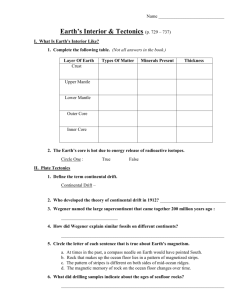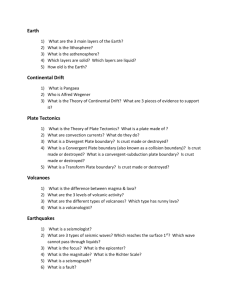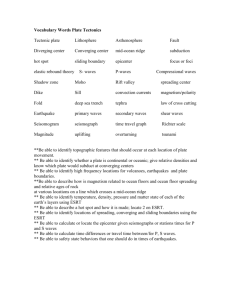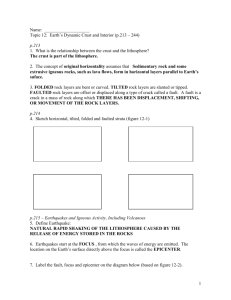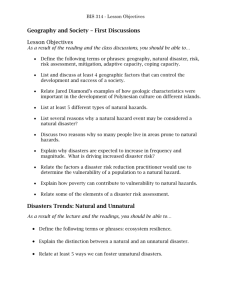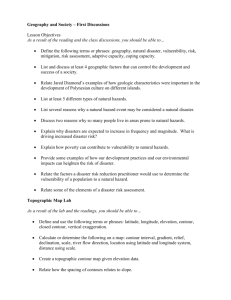Review Sheet for Plate Tectonics, Volcanoes & Earthquakes
advertisement
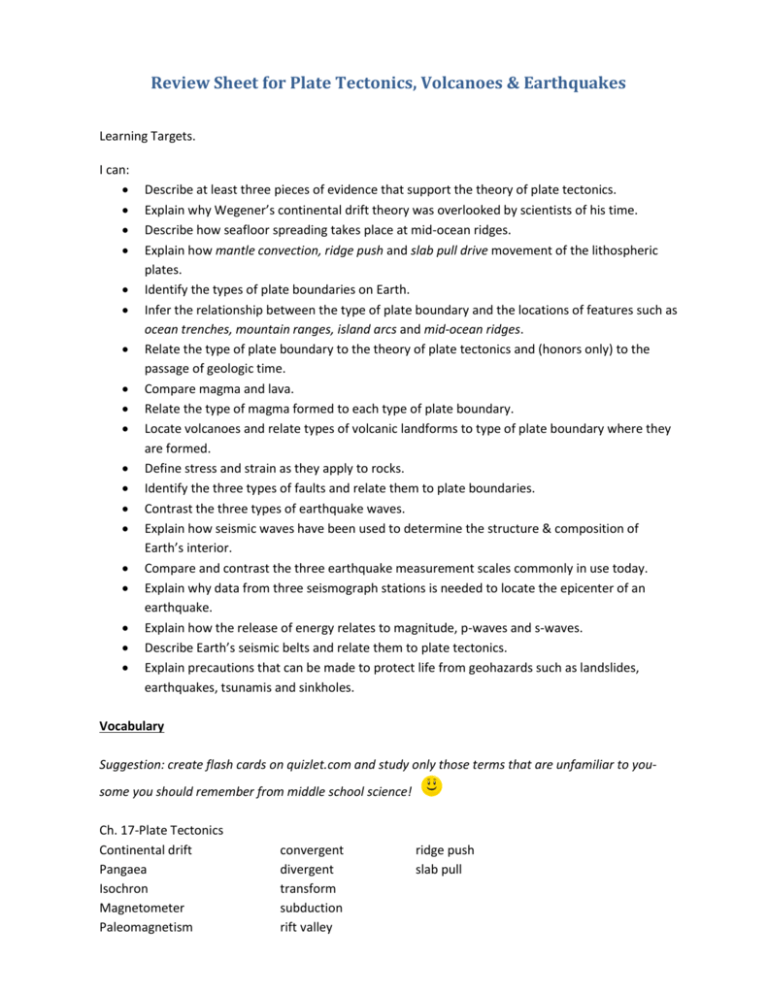
Review Sheet for Plate Tectonics, Volcanoes & Earthquakes Learning Targets. I can: Describe at least three pieces of evidence that support the theory of plate tectonics. Explain why Wegener’s continental drift theory was overlooked by scientists of his time. Describe how seafloor spreading takes place at mid-ocean ridges. Explain how mantle convection, ridge push and slab pull drive movement of the lithospheric plates. Identify the types of plate boundaries on Earth. Infer the relationship between the type of plate boundary and the locations of features such as ocean trenches, mountain ranges, island arcs and mid-ocean ridges. Relate the type of plate boundary to the theory of plate tectonics and (honors only) to the passage of geologic time. Compare magma and lava. Relate the type of magma formed to each type of plate boundary. Locate volcanoes and relate types of volcanic landforms to type of plate boundary where they are formed. Define stress and strain as they apply to rocks. Identify the three types of faults and relate them to plate boundaries. Contrast the three types of earthquake waves. Explain how seismic waves have been used to determine the structure & composition of Earth’s interior. Compare and contrast the three earthquake measurement scales commonly in use today. Explain why data from three seismograph stations is needed to locate the epicenter of an earthquake. Explain how the release of energy relates to magnitude, p-waves and s-waves. Describe Earth’s seismic belts and relate them to plate tectonics. Explain precautions that can be made to protect life from geohazards such as landslides, earthquakes, tsunamis and sinkholes. Vocabulary Suggestion: create flash cards on quizlet.com and study only those terms that are unfamiliar to yousome you should remember from middle school science! Ch. 17-Plate Tectonics Continental drift Pangaea Isochron Magnetometer Paleomagnetism convergent divergent transform subduction rift valley ridge push slab pull Ch. 18-Volcanoes Viscosity Caldera Shield cone Rhyolitic Ch.19-Earthquakes Epicenter Secondary (s) waves Stress Seismometer Richter scale Tsunami hot spot cinder cone basaltic pyroclastic flow crater composite cone andesitic lahar focus surface waves fault magnitude Mercalli scale primary (p) waves strain seismogram Moment magnitude scale seismic gap




